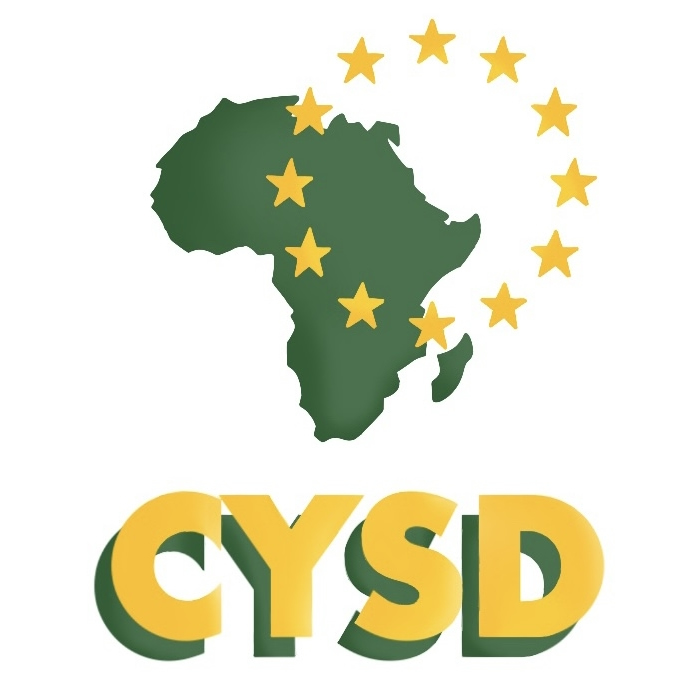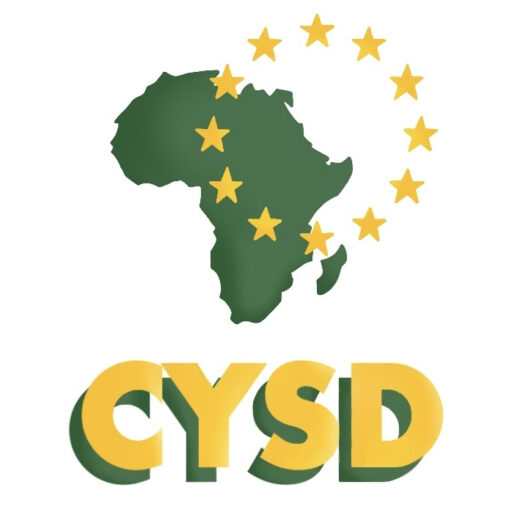Area
Environmental
GOAL(s)
Summary (description and reason to be)
Youth Empowerment in Climate Action and Environmental Sustainability is a sustainable project undertaken by SEDARVP Ghana. The reason for this project is to engage youth, policy makers and other stakeholders to tackle and addresses the urgent need in mitigating the damaging effect of climate change and promote sustainability of the environment for future generations. The youth, who are the leaders of tomorrow, have a critical role to play in this effort. By involving young people to advocate for a sustainable clean environment, they are empowered with knowledge, skills and resources to become the agents of change in their communities, driving action towards sustainable practices and advocating for policies that would mitigate climate risk and protect the environment.
Additionally, by involving youth in this effort, we can promote intergenerational collaboration and create a more inclusive and equitable approach to climate action. The goal of this project is to create a platform for young people to learn about climate change and environmental sustainability, connect with like-minded individuals, and take action to make a positive impact on their communities and the planet.
Target: Vulnerable Group (VG) and/or type of community
Both Urban and Rural Communities in Ghana.
Application setting: context
The application setting of Youth Empowerment in Climate Action and Environmental Sustainability Project is focussed on SDG Goals. Some of the settings for the project include:
• Schools and educational institutions: the project is engages and educates students and raise awareness on climate change and its impacts on the environment. We encourage students to take part in environmental project, such as waste management, clean and water management, afforestation and other climate-related issues.
• Community centers: we provide a platform for young people to engage in environmental protection and management projects, such as clean-up exercises, community gardens and tree planting. We also organise programmes and activities that promote environmental awareness and encourage community involvement.
• Our activities and environmental campaigns also aim to create opportunities for young people to participate in local and global environmental campaigns and other sustainable projects.
• The project works by incorporating government agencies to create programs and initiatives that promotes youth engagement in environmental sustainability projects.
• Funding and resources is necessary to support youth-led environmental initiatives and encourage youth to participate in policy-making processes related to climate change and sustainability.
• The overall application setting for Youth Empowerment in Climate Action and Environmental Sustainability Projects are diverse and can include other stakeholders, and organisations, institutions to promote environmental awareness in achieving the Sustainable Development Goals.
Objectives
The objectives of this project are to:
• Increase awareness and understanding of climate change and environmental issues.
• Educate young people about the impacts of climate change and environmental degradation on the planet and the importance of sustainable living.
• Foster a sense of responsibility and ownership among youth towards the environment.
• Build skills and competencies in young people to enable them participate effectively in climate resilience and or environmental sustainability projects.
Requirements
The requirements for this project are:
• The team, volunteers and other stakeholders involved are committed to creating a sustainable future and empowering youth in climate action and other impactful projects.
• Youth and stakeholders have good understanding of climate change and environmental issues and possess the necessary expertise and knowledge to deliver effective youth empowerment programs.
• Capacity building is essential for empowering youth in climate change for addressing SDGs.
• Access to resources such as fund, knowledge, equipment and tools are very critical in achieving this agenda.
Partnerships and collaborations between different organisation and stakeholders, including governments, NGOs, educational institutions and community groups.
Performance procedures
Youth empowerment is critical to achieving SDGs, thus, climate action and environmental sustainability. The following are the procedures used to enhance the effectiveness of youth empowerment and in achieving SDGs.
• Setting clear goals and objectives
• Developed indicators to enhance and measure the progress towards achieving a clean and safety and eco-friendly living environment.
• Conducting baseline assessments
• Monitoring and evaluation to know the level of progress towards goals and objectives.
• Based on the results of monitoring and evaluation, strategies is needed to adjust and enhance the effectiveness of youth effort in achieving climate resilience.
Activities
By achieving SDGs with Youth Empowerment in Climate Action and Environmental Sustainability, the project involves a range of activities, including:
• Capacity building and training
• Youth engagement and participation
• Networking and collaborations
• Organizing community and youth led campaigns and providing a platform for youth to share their views and amplify voices. And promoting youth led media campaigns.
• By engaging in these activities, SEDARVP Ghana and partners can help to build the capacity of youth to lead climate action and sustainability initiatives, and empower them to become effective advocates for a more sustainable future.
Results
The results of this project are overwhelming, last year, 2022, our organisation donated one thousand seedlings to 50 community schools in Northern Region to plant in the schools to keep the environment and the vegetation conducive for learning whiles been climatic conscious, thus, to avoid climate risk and keep the ecosystem balanced. More than 300 students were educated on good environmental hygiene and practices with the help of an environmental officer in the district to always take a very good care of the trees, as lack of trees are not providing us quality air to breath.
Strengths
The strengths of the project include:
• Passion and Enthusiasm: Young people and participant are passionate change makers and optimistic about the project. This passion and enthusiasm is harnessed to drive action and create change in the field of climate action and environmental sustainability.
• Creativity and Innovation: Young people often bring fresh perspectives and innovative ideas to the table. They are more willing to think outside the box and explore new solutions to address environmental challenges.
• Long-term vision: young people have a long-term stake in the future of the planet and are more thinkable in terms of sustainability and the long-term impacts of their actions.
• Capacity building: Empowering young people with the knowledge, skills, and resources to take action on climate and environmental issues also help build a new generation of environmental leaders who can continue to drive change in the years to come.
• Collaboration and networking: the project also facilitate collaboration and networking among young people and with other stakeholders, including NGOs, governments, and businesses, such as ZOOMLION Company limited to foster collective action to achieving SDG.
• Young people are often more tech-savvy and comfortable with digital tools, which can be leveraged to raise awareness, organize events and campaigns, and communicate with a wider audience.
Weaknesses
While there are many strengths to the projects, there are also some weaknesses that is noted:
• Limited resources: As a Youth-led projects, the project lack the funding and resources necessary to scale up the efforts and achieve significant impact. This limits the ability to make meaningful change in the face of large-scale environmental challenges.
• Limited political power: there is very little political power necessary to influence policies or regulatory frameworks related to climate and the environment. This in one way or the other limit the ability to affect systemic change.
• Empowering young people to lead climate and environmental initiatives can be demanding and stressful, and may lead to burnout or high turnover rates among youth leaders.
Difficulties or constrains for its implementation
There are a number of difficulties or constraints that arises in the implementation of the Youth Empowerment in Climate Action and Environmental Sustainability Projects:
• Lack of institutional support: As a Youth-led climate and environmental initiatives, it somewhat faces a lack of the expected support or recognition from government institutions or other formal organizations, which can limit the ability to access resources and have a significant impact.
• Limited funding: the project has no permanent funders/sponsors or access to sufficient funding to scale up the project and its efforts and implement it into large-scale projects.
• Political constraints: The political climate challenges for youth-led initiatives to implement meaningful change.
• Social and cultural barriers: Some communities do not prioritize climate and environmental issues, or not be receptive to youth-led initiatives for cultural or social reasons, which can limit the effectiveness of youth empowerment initiatives.
• Limited networks and partnerships.
It is important to address these difficulties and constraints to ensure that youth empowerment in climate action and environmental sustainability projects can be successful in achieving the Sustainable Development Goals.
CRITERIA actors or stakeholder are using to assess it as a “good practice”
The following criteria used to assess good practices on Youth Empowerment in Climate Action And Environmental Sustainability Projects:
• Impact: The project demonstrates a clear impact on the environment and climate action, which is able to measure and report.
• Sustainability: The project is designed to be justifiable and fit in to the long term plan, with a clear ambition for how it will be upheld and funded beyond the initial implementation phase.
• Inclusivity: The project designed to be inclusive of all young people, regardless of their gender, ethnicity, socio-economic background, or other characteristics.
• Innovation: The project demonstrate innovation in its approach to addressing environmental challenges and climate action, utilizing new and creative solutions to these issues.
• Empowerment: The project is designed to empower young people to take leadership roles and drive action on climate and environmental issues.
Education and awareness: The project prioritize education and awareness-raising among young people and the wider community, to increase understanding of climate and environmental issues and promote behaviour change.
Year and length (duration)
6 years. Since 2019.
Comments (additional info, remarks)
Youth Empowerment in Climate Action and Environmental Sustainability is a critical issue, and as young people growing up to inherit the planet and its consequences due to climate change issues:
There should be an increase in participation in climate action and sustainability projects by creating more opportunities for youth to get involved. This could include organizing youth-led campaigns, training programs, and mentorship initiatives.
Foster collaboration between stakeholders, government, NGOs, and youth groups to ensure that youth voices are heard and ideas are taking into consideration for policy influence.
Provide the necessary resources and support for the youth to implement a sustainable project, such as waste reduction programs, community/school gardens, and renewable energy initiatives.
References (Bibliography, URLs, suggested readings)
https://sedarvp-ghana.org/
Zoomlion Ghana Company Ltd.
Ghana Forest Commission

